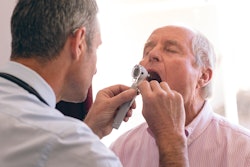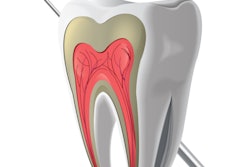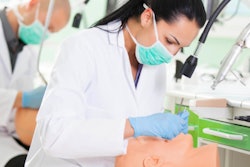
The technological age, which is altering every part of our existence, has a wide range of effects on dentistry, including new diagnostic equipment, creative preventive strategies, and groundbreaking treatments.
According to experts, advancements in dental technology will ultimately enhance and increase access to dental care by enabling same-day care, which results in fewer medical visits and lower costs for a healthy smile.
Below are three ways that technology is altering dentistry as we know it.
1. Digital dentistry tools
 Dr. James Younger.
Dr. James Younger.The possibility for more accurate diagnoses and therapies keeps expanding as more data are made available to scientists. Dental experts can identify your vulnerability to certain oral diseases, for example, based on information like your age, medical history, dental health status, and information from your DNA.
In the near future, dental and medical professionals will progressively customize care based on patients' unique DNA, making decisions that reflect what has been shown to work best for each person's particular genome and physiology. They might even choose the best course of action based on the particular bacterium at the root of a person's issue.
The continual creation of diagnostic instruments that can more precisely assess one's physical status is a crucial component of this revolution. One such cutting-edge technology is the Canary System. The system is about the size of a toothbrush and generates pulsating red laser light so that a short laser scan can find cracks and cavities too small to be visible on an x-ray. Additionally, this dental technology does not expose patients to radiation.
2. Next-generation diagnosis and treatment
Nowadays, lasers are used for both diagnosis and treatment. For minor gum surgery, dentists currently use soft-tissue lasers. However, in the future, they may switch to computers entirely. In the future, whirring high-speed dental drills might be replaced by hard-tissue lasers that use small, digitally controlled mirrors to remove cavities. However, before these gadgets are widely used, their high prices will need to be reduced.
Biomaterials are another next-generation technology that can fill voids that are unmatched by current treatments. For instance, a Harvard-University of Nottingham collaboration developed a synthetic biomaterial that could essentially allow a cavity to cure itself, a finding that has the potential to significantly lessen tooth degradation that can result in costly, uncomfortable root canals.
Additionally, oral cancer can now be discovered earlier. The VELscope instrument detects tissue changes that are invisible to the unaided eye using forensic-style blue lights, revealing possible problems that would necessitate a biopsy.
Looking to the distant future, nanobots might replace bigger dentistry tools. Some of these microscopic devices may be used to treat oral cancer, replace or straighten teeth, administer anesthetic during oral surgery, and diagnose diabetes and other disorders.
Other innovations may use antibacterial, carbon nanotube-based goods like wearable toothpaste to combat bacteria. However, because human clinical studies are required to ascertain both efficacy and safety, and nanotech research is complicated, these advances may take years to come to fruition.
3. Democratizing dental care
Some developments will make it possible for patients to use a smartphone to perform an initial screening at home or a community health center. By enabling prompt detection of fundamental issues for anybody, anywhere -- even those who reside in distant areas or regions with a shortage of dentists -- these innovations will democratize dental care.
With these dental technological breakthroughs, highly skilled specialists aren't required to perform routine imaging and other conventional diagnostic procedures. Technology will soon play a crucial role in dental practices, freeing up dentists so they can concentrate on the intricate, challenging procedures that require their expertise. Expenses should eventually decrease as a result.
There won't be any more drills or injections in future dentistry, and procedures will be completed more quickly. Overall, a stronger focus on prevention will lead to fewer cavities and cases of periodontal disease. The future of dentistry is one of lovely white and healthy smiles.
Dr. James Younger graduated from the dentistry program at the University of Toronto in 1999. He is in private practice, providing a full scope of care, including implants and bone/sinus grafting. In April 2015, Younger was inspired by the idea of improving hygiene temping through modern mobile technology and thus TempStars was born. TempStars uses technology to make it faster and easier for dental offices to find skilled, reliable hygienists quickly while allowing hygienists to live a busy, flexible, and empowered professional life. He can be reached at [email protected].
The comments and observations expressed herein do not necessarily reflect the opinions of DrBicuspid.com, nor should they be construed as an endorsement or admonishment of any particular idea, vendor, or organization.



















